Understanding Joint Attention (JA) in Autism: Key Insights and Implications
Joint Attention (JA) is a cornerstone of human communication and social interaction. It refers to the ability to share a common focus and interest with another person, often involving eye gaze, pointing, and other nonverbal cues. This shared focus allows individuals to connect, communicate, and build relationships. However, for individuals with autism spectrum disorder (ASD), joint attention can be a significant challenge. Difficulties with JA can impact language development, social engagement, and overall quality of life. In this article, we will delve deeply into the significance of joint attention in autism, explore its early signs, discuss its profound impact on communication and social skills, and provide actionable strategies to enhance shared focus and connection.
What is Joint Attention?
Joint attention is the ability to coordinate attention between a social partner and an object or event of mutual interest. It involves three key components:
- Initiating Joint Attention: The ability to draw another person’s attention to an object or event, such as pointing to a bird in the sky.
- Responding to Joint Attention: The ability to follow another person’s gaze or gesture to focus on an object or event.
- Sustaining Joint Attention: The ability to maintain shared focus over time, such as playing with a toy together or engaging in a conversation.
For typically developing children, joint attention emerges naturally during infancy and serves as a foundation for language development, social interaction, and learning. However, for individuals with autism, JA is often impaired, leading to challenges in these areas.
Early Signs of Joint Attention Difficulties in Autism
Joint attention typically develops in infancy, and its absence or delay can be an early indicator of autism. Research shows that infants who later receive an ASD diagnosis exhibit fewer joint attention behaviors compared to their neurotypical peers. These early signs may include:
- Lack of Eye Contact: Infants with autism may avoid eye contact or have difficulty maintaining it.
- Limited Pointing: They may not point to objects to share interest or request something.
- Difficulty Following Gaze: They may not follow another person’s gaze or gestures to focus on an object or event.
- Absence of Coordinated Attention: They may struggle to shift attention between an object and a social partner.
These early signs are critical for early identification and intervention. Parents and caregivers who notice these behaviors should seek professional evaluation to determine if further assessment is needed.
The Impact of Joint Attention on Communication
Joint attention plays a pivotal role in the development of language and communication skills. When children engage in JA, they learn to associate words with objects, actions, and events. For example, when a parent points to a ball and says, “Look at the ball,” the child learns to connect the word “ball” with the object. This shared focus fosters vocabulary development, sentence structure, and conversational skills.
For children with autism, difficulties with joint attention can lead to delays in language acquisition and communication challenges. They may struggle to:
- Initiate Conversations: Without the ability to draw attention to shared interests, initiating conversations can be difficult.
- Follow Social Cues: They may miss nonverbal cues, such as gestures or facial expressions, that are essential for effective communication.
- Engage in Reciprocal Communication: They may have trouble taking turns in conversations or staying on topic.
These challenges can make it harder for children with autism to express themselves, build friendships, and participate in social activities. However, with targeted interventions, these skills can be developed and improved.
The Social Implications of Joint Attention
Joint attention is not only essential for communication but also for building relationships and social engagement. It allows individuals to share experiences, understand others’ perspectives, and connect emotionally. For individuals with autism, difficulties with JA can lead to social isolation and reduced quality of life.
In social settings, such as school or playgroups, children with autism may:
- Miss Social Cues: They may not notice when a peer is trying to engage them in play or conversation.
- Struggle with Group Activities: They may find it challenging to participate in group activities that require shared focus and cooperation.
- Experience Social Anxiety: The inability to connect with others can lead to feelings of loneliness and anxiety.
These social challenges can persist into adulthood, affecting relationships, employment, and independent living. However, by addressing joint attention difficulties early and consistently, individuals with autism can develop the skills needed to navigate social interactions more effectively.
Strategies to Promote Joint Attention in Autism
Parents, caregivers, and educators play a crucial role in promoting joint attention skills in individuals with autism. By incorporating targeted strategies into everyday routines, they can help children develop these essential skills. Below, we explore 15 practical strategies in greater depth:
1. Establish Eye Contact
Eye contact is a fundamental component of joint attention. To encourage eye contact:
- Get down to the child’s eye level and use their name to gain their attention.
- Reinforce eye contact with positive feedback, such as praise or a preferred item.
- Use playful activities, like peek-a-boo, to make eye contact fun and engaging.
2. Use Visual Supports
Visual aids, such as visual schedules, social stories, or picture cards, can provide clear and consistent cues to support joint attention. For example:
- A visual schedule can help a child understand the sequence of activities and anticipate transitions.
- Social stories can teach specific joint attention skills, such as pointing or following gaze.
3. Incorporate Sensory-Based Activities
Sensory activities can capture a child’s interest and promote joint attention. Examples include:
- Playing with water, bubbles, or sensory bins.
- Using textured toys or objects that encourage exploration and shared focus.
4. Implement Turn-Taking Games
Turn-taking games teach the concept of shared focus and reciprocity. Examples include:
- Rolling a ball back and forth.
- Taking turns with a toy or during a board game.
5. Utilize Gestures and Pointing
Gestures and pointing are powerful tools for directing attention. To encourage their use:
- Model pointing to objects of interest and encourage the child to imitate.
- Use exaggerated gestures to make your intentions clear.
6. Highlight Shared Interests
Engaging in activities or topics that interest the child can increase motivation and attention. For example:
- If the child loves trains, use train-themed toys or books to promote joint attention.
- Incorporate their interests into everyday routines, such as counting trains during a walk.
7. Provide Choices
Offering choices empowers the child and encourages active participation. For example:
- “Do you want to play with the blocks or the cars?”
- “Should we read this book or that one?”
8. Use Visual Cues
Visual cues, such as arrows or signs, can direct attention to objects or areas of interest. For example:
- Place an arrow near a toy to encourage the child to look at it.
- Use signs to label objects and promote shared focus.
9. Modify the Environment
Creating a supportive environment can optimize engagement and attention. Tips include:
- Reducing noise and visual distractions.
- Organizing spaces to minimize clutter and create a calming atmosphere.
10. Use Technology
Technology-based tools, such as educational apps or interactive games, can promote joint attention. Examples include:
- Apps that encourage turn-taking or shared focus.
- Interactive games that require collaboration and communication.
11. Model Joint Attention Skills
Demonstrate joint attention skills by actively engaging with the child. For example:
- Engage in parallel play, where you play alongside the child and comment on their actions.
- Use descriptive language to narrate your actions and draw attention to shared interests.
12. Provide Social Narratives
Social narratives or video modeling can teach and reinforce joint attention skills in a structured way. For example:
- Create a social story about pointing to share interest.
- Use video modeling to demonstrate how to follow someone’s gaze.
13. Offer Rewards and Reinforcement
Positive reinforcement can motivate and reinforce joint attention behaviors. Examples include:
- Praising the child for making eye contact or pointing.
- Offering small rewards, such as stickers or tokens, for successful joint attention.
14. Involve Peers and Siblings
Peer interactions can provide valuable opportunities for practicing joint attention. Tips include:
- Encouraging playdates with peers who can model joint attention skills.
- Involving siblings in joint activities to promote shared focus.
15. Seek Professional Help
Consulting with professionals, such as speech-language pathologists or occupational therapists, can provide tailored strategies and interventions. They can:
- Assess the child’s joint attention skills and identify areas for improvement.
- Develop individualized intervention plans to address specific challenges.
The Role of Therapy in Developing Joint Attention
Therapy plays a crucial role in helping individuals with autism develop joint attention (JA) skills. While parents and caregivers can implement strategies at home, professional interventions provide structured, evidence-based approaches tailored to the individual’s needs. Below, we explore specific therapies used to enhance JA, their outcomes, and how parents can support these efforts at home.
Therapies for Developing Joint Attention
1. Play-Based Interventions
Play-based therapies are among the most effective approaches for teaching joint attention. These therapies use play as a natural and engaging way to encourage shared focus and interaction. Examples include:
- Floortime (DIR/Floortime): This approach focuses on following the child’s lead during play to build emotional connections and shared attention. Therapists and parents join the child in their preferred activities and gradually introduce joint attention opportunities, such as pointing to a toy or making eye contact.
- Joint Attention Symbolic Play Engagement and Regulation (JASPER): JASPER combines play-based activities with structured techniques to improve JA, symbolic play, and emotional regulation. For example, a therapist might use a favorite toy to encourage the child to share attention and take turns.
Outcomes: Studies show that play-based interventions can significantly improve JA skills, leading to better language development, social engagement, and emotional regulation.
2. Naturalistic Developmental Behavioral Interventions (NDBIs)
NDBIs integrate behavioral and developmental approaches to teach skills in natural settings. Examples include:
- Pivotal Response Treatment (PRT): PRT targets pivotal areas, such as motivation and self-initiation, to improve JA. For instance, a therapist might use a child’s interest in cars to encourage pointing or shared play.
- Early Start Denver Model (ESDM): ESDM uses play-based activities to teach JA, communication, and social skills. Therapists follow the child’s interests and gradually introduce joint attention tasks, such as looking at a book together.
Outcomes: Research indicates that NDBIs can lead to significant improvements in JA, language, and social skills, particularly when started early.
3. Speech and Language Therapy
Speech-language pathologists (SLPs) play a key role in developing JA, as it is closely linked to communication. Techniques include:
- Modeling and Imitation: SLPs model JA behaviors, such as pointing or making eye contact, and encourage the child to imitate them.
- Visual Supports: SLPs use visual aids, such as picture cards or social stories, to teach JA skills in a structured way.
- Parent Training: SLPs often train parents to use JA strategies at home, ensuring consistency and reinforcement.
Outcomes: Speech therapy can improve JA skills, leading to better communication, vocabulary, and conversational abilities.
4. Occupational Therapy (OT)
Occupational therapists (OTs) address sensory and motor challenges that may impact JA. Techniques include:
- Sensory Integration Therapy: OTs use sensory activities, such as swinging or playing with textured objects, to help children regulate their sensory systems and focus on shared activities.
- Motor Skill Development: OTs work on fine and gross motor skills needed for JA, such as pointing or turning toward a sound.
Outcomes: OT can enhance a child’s ability to engage in JA by addressing underlying sensory and motor challenges.
5. Video Modeling
Video modeling involves showing videos of individuals demonstrating JA behaviors, such as pointing or following gaze. The child watches the video and then practices the skill in real-life situations.
Outcomes: Video modeling has been shown to improve JA skills, particularly in children who respond well to visual learning.
How Parents Can Support Joint Attention at Home
Parents play a vital role in reinforcing JA skills outside of therapy sessions. Here are practical ways to support JA development at home:
1. Create Opportunities for Shared Focus
- Follow Your Child’s Lead: Observe what your child is interested in and join them in that activity. For example, if they are playing with blocks, sit beside them and comment on their actions.
- Use Everyday Routines: Incorporate JA into daily activities, such as mealtime, bath time, or grocery shopping. For instance, point to foods at the store and name them.
2. Use Visual and Verbal Cues
- Point and Label: Point to objects and name them to encourage shared attention. For example, say, “Look at the dog!” while pointing to a dog.
- Use Gestures: Use gestures, such as waving or nodding, to direct your child’s attention.
3. Encourage Turn-Taking
- Play Turn-Taking Games: Engage in games that require taking turns, such as rolling a ball back and forth or stacking blocks together.
- Model Turn-Taking: Demonstrate turn-taking during conversations or activities and encourage your child to follow.
4. Reinforce Eye Contact
- Get on Their Level: Sit or kneel at your child’s eye level to make eye contact easier and more natural.
- Use Positive Reinforcement: Praise your child when they make eye contact, even if it’s brief.
5. Incorporate Sensory Activities
- Engage in Sensory Play: Use activities like playing with water, sand, or playdough to capture your child’s interest and promote shared focus.
- Create a Sensory-Friendly Environment: Reduce distractions and create a calming space where your child can focus on shared activities.
6. Use Technology Wisely
- Interactive Apps: Use apps designed to promote JA, such as those that encourage turn-taking or shared focus.
- Educational Videos: Watch videos together and pause to discuss what’s happening, encouraging shared attention.
7. Be Patient and Consistent
- Practice Regularly: Incorporate JA strategies into your daily routine to provide consistent opportunities for practice.
- Celebrate Small Wins: Acknowledge and celebrate even small improvements in JA skills to build your child’s confidence.
The Role of Therapy in Supporting Parents
Therapists not only work directly with children but also empower parents to support JA development at home. This includes:
- Parent Training: Teaching parents specific strategies to promote JA during everyday interactions.
- Collaborative Goal-Setting: Working with parents to set realistic goals and track progress.
- Providing Resources: Offering tools, such as visual schedules or social stories, to reinforce JA skills at home.
Long-Term Benefits of Improving Joint Attention
Developing JA skills has far-reaching benefits that extend into adulthood. These include:
- Improved Communication: Enhanced JA skills lead to better language development and conversational abilities.
- Stronger Social Connections: Individuals with strong JA skills are better equipped to build and maintain relationships.
- Greater Independence: JA skills support learning, problem-solving, and adaptability, contributing to greater independence in daily life.
Do These Interventions Work?
Do These Interventions Work?
- A study found that children who received joint attention interventions showed improvements in language and social skills.
- Many parents report that consistent use of these strategies leads to noticeable progress in their child’s ability to engage and connect.
Joint attention is a foundational skill that underpins communication, social interaction, and learning. For individuals with autism, challenges with JA can have significant implications, but with the right support, these skills can be developed and strengthened. Therapy provides structured, evidence-based approaches to teach JA, while parents play a critical role in reinforcing these skills at home.
By combining professional interventions with consistent, everyday practice, individuals with autism can make meaningful progress in their JA skills. This not only enhances their ability to connect with others but also opens doors to greater independence and quality of life. With patience, persistence, and collaboration between parents and therapists, the journey toward improved joint attention is both achievable and deeply rewarding.



